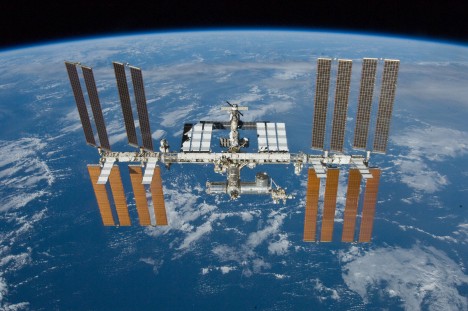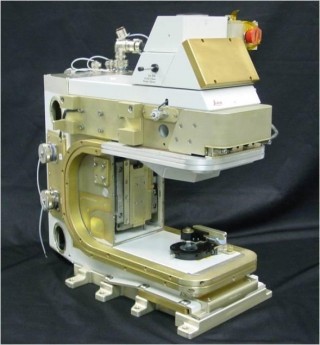In a few days a carrier rocket will be launched to the International Space Station (ISS). Samples from Prof. Christian Betzel’s research group at Universität Hamburg will be aboard to be analyzed in the absence of gravity.

On the ISS, protein crystals can grow better. Credit: NASA
The experiment in the context of the CUI research is expected to be conducted on the ISS from mid-February to mid-March 2017 on behalf of Prof. Betzel’s group, aiming at optimizing the growth of micro- and nanocrystals (the launch originally scheduled for February 8 has been postponed at short notice). “In the absence of gravity, there is no convection or sedimentation which means that protein crystals can grow better and are of higher quality, lacking defects, and more pure,” the CUI scientist explains. It is exactly this process, the researchers want to analyze in detail.
Crystals help to determine the three dimensional structure and function of biomolecules at atomic resolution. This is significantly important for researching the basic components of life and understanding illnesses. State of the art experimental stations for serial femtosecond crystallography offer the opportunity to determine the atomic structure and function of biomolecules by using extremely small crystals. Betzel: “The crystals we use are getting smaller and smaller and for that reason they have to become better and more pure. Certain proteins can only be analyzed with the help of such tiny little crystals.”

The ISS is equipped with a special microscope (LMM, Light Microscopy Module). Credit: NASA
The samples for the experiment on the ISS had been prepared in December 2016 already at NASA, USA. Thereby the researchers chemically modified certain proteins, thus contaminating protein solutions, which will be used for crystallization experiments on the ISS in accurately calculated concentration series. Now the scientists want to observe the process of contamination in space and compare it with experimental results on earth in order to understand how gravitation contributes to contaminations in crystals. The ISS is equipped with a special microscope (LMM, Light Microscopy Module) the data of which are live video transmitted to a protected computer system in the working group’s laboratory at the Institute for Biochemistry and Molecular Biology. Back on earth the crystals will be further analyzed with synchrotron radiation at DESY and applying mass spectroscopy. The results from this research project will contribute to the targeted production of protein crystals, which will also be used at European XFEL in the future.
Betzel: “We have applied for the experiment at ISS in the year 2013 together with colleagues in the US.” The NASA call for proposals “Research Opportunities in Complex Fluids and Macromolecular Biophysics” concentrated on analyzing mass transport in the absence of gravity. “We applied and very early found collaborators in the US. Similar to ESA, the selection process is rather competitive and the preselection is followed by several obstacles and requirements,” the CUI scientist explains. Including the time for preparing such an experiment, planning takes two to three years. Furthermore, specific conditions have to be taken into account, for example only special hardware and materials are approved on the ISS, as particular glass capillaries in this case.
The project is also supported by the German national aeronautics and space agency (Deutsche Agentur für Luft- und Raumfahrt, DLR). Text: PR UHH/Adler

